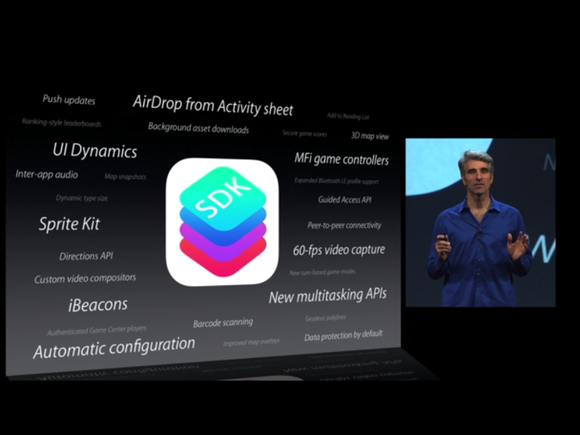Safari Technology Preview Release 94 is now available for download for macOS Mojave and macOS Catalina. If you already have Safari Technology Preview installed, you can update in the Software Update pane of System Preferences on macOS.
This release covers WebKit revisions 250329-250947.
CSS Shadow Parts
- Added support for the
::part()pseudo element from CSS Shadow Parts (r250889,r250902, r250914, r250628, r250584, r250643, r250701, r250817, r250821, r250861)
Web Animations
- Fixed removing an element to only cancel its declarative animations (r250335)
Storage Access API
- Changed
document.hasStorageAccess()to return true when the cookie policy allows access and false otherwise, for third parties not blocked by ITP (r250431, r250589)
WebRTC
- Changed to allow suspending RTCPeerConnection when not connected (r250726)
Media
- Updated MediaDevices to require a secure context (r250551)
JavaScript
- Changed
toExponential,toFixed, andtoPrecisionto allow arguments up to 100 (r250389)
CSS Grid
- Preserved auto
repeat()ingetComputedStyle()for non-grids (r250715)
Web API
- Accepted two values in the overflow shorthand (r250849)
- Allowed using WebGL 2 when
USE_ANGLE=1(r250740) - Changed the default
statusTextofResponseto an empty string (r250787) - Changed CSS ellipse() to accept 0 or 2
<shape-radius>(r250653) - Changed Service Worker Fetch events to time out (r250852)
- Corrected
clip-path<geometry-box>mapping (r250778) - Changed Fetch API no-CORs check to take into account same-origin (r250515)
- Changed radio button groups to be scoped by shadow boundaries (r250708)
- Fixed a newly inserted element to get assigned to a named slot if slot assignments had already happened (r250709)
- Fixed AbortSignal to always emit the abort signal (r250727)
- Fixed
JSON.parseto correctly handle array proxies (r250860) - Made table’s
clientWidthandclientHeightinclude its border sizes (r250553) - Updated
attachShadowto support attaching a shadow root to a main element (r250770) - Updated Fetch data URL HEAD request to result in empty response body (r250822)
- Updated radial gradients to reject negative radii (r250730)
- Updated ImageBitmap to be serializable (r250721)
Web Inspector
- Elements
- Fixed issue where properties were always shown as invalid if they didn’t match the selected node (r250633)
- Resources
- Debugger
- Prevent blackboxing of scripts that haven’t finished loading or failed to load (r250813)
- Canvas
- Made it more obvious that the cards in the Overview are clickable (r250859)
- Show “No Preview Available” instead of an empty preview for WebGPU devices (r250858)
- Support editing of WebGPU render pipelines that use the same shader module for vertex and fragment (r250874)
- Fixed issue where clicking on the Overview path component didn’t work (r250855)
- Dark Mode: Minor dark mode style fixes (r250533, r250854)
- Settings
- Enable the image transparency grid by default and create a checkbox for it (r250814)
WebDriver
- Fixed an issue that prevented
sudo safaridriver --enablefrom working correctly
back-forward Cache
- Allowed pages served over HTTPS with
Cache-Control: no-storeheader to enter the back-forward cache (r250437) - Allowed pages using EventSource to enter the back-forward cache (r250761)
- Allowed pages using FontFaceSet to enter the back-forward cache (r250693)
- Allowed pages using IDBIndex to enter the back-forward cache (r250754)
- Added basic back-forward cache support for RTCPeerConnection (r250379)
- Changed IDBTransaction and IDBObjectStore to not prevent a page from entering the back-forward cache (r250531)
- Fixed pages that frequently fail to enter the back-forward cache due to pending loads (r250414)
- Fixed pages using WebGLRenderingContext to enter the back-forward cache (r250464)
- Fixed pages with Web Workers to enter the back-forward cache (r250527)
- Fixed pages using PendingImageBitmap to enter the back-forward cache (r250782)
- Fixed ServiceWorkerContainer to never prevent a page from entering the back-forward cache (r250758)
- Fixed XMLHttpRequest sometimes preventing pages from entering the back-forward cache (r250678)
- Fixed IDBRequest to not prevent a page from entering the back-forward cache (r250425)
- Fixed provisional and scheduled loads in subframes to not prevent a page from entering the back-forward cache (r250686)
- Fixed RTCDataChannel to not prevent entering back-forward cache except if in an open state (r250573)
- Made fixes to allow youtube.com to enter the back-forward cache on macOS (r250935)
- Improved Service Worker support for back-forward cache (r250378)
IndexedDB
- Added size estimate for key path when estimating task size (r250666)
- Fixed wrapping CryptoKeys for IndexedDB during serialization (r250811)
- Included size of index records in size estimate of put/add task (r250936)
- Updated size to actual disk usage only when estimated increase is bigger than the space available (r250937)













